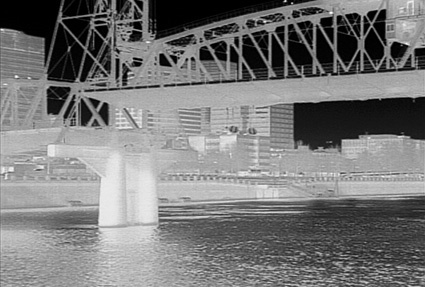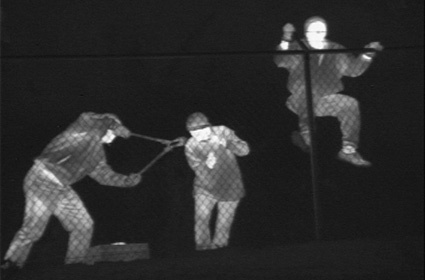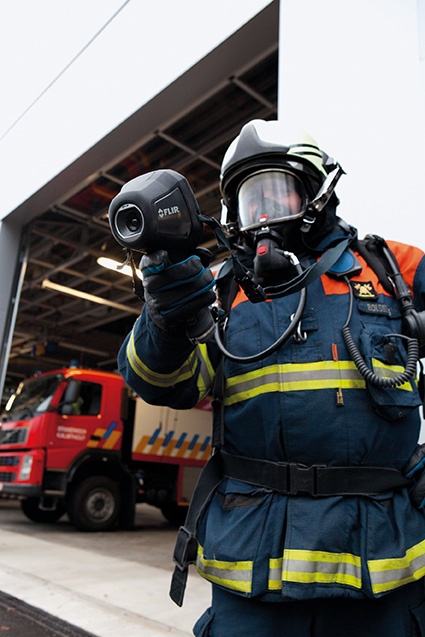Thermal Imaging: A Technology Ready to Further Conquer the World
We are living in a day and age where new technologies are brought to market faster than ever before. One technological breakthrough is often quickly leading to another. A new techn...



We are living in a day and age where new technologies are brought to market faster than ever before. One technological breakthrough is often quickly leading to another. A new technology is often introduced even before people can familiarize themselves with the previous one. New products, based on these new technologies, are being launched continuously. Sometimes they are quite expensive in the introduction stage, but once the early adapters have had a chance to buy the product and once it can go into mass production, prices rapidly go down and the product sometimes even almost becomes a commodity. Just one example is the mobile phone. Bulky and expensive in the beginning it has rapidly become a product that fits in the palm of the hand and is being used daily by millions of people.
A lot of technologies that we are considering to be quite common today have found their origin in military applications. Radar and jet engines were originally developed by and for the military. Global Positioning Systems, commonly known as GPS, were developed in the early 1970's by the United States Department of Defense to guide missiles. When first integrated in cars for civilian applications, GPS was still a very expensive system. Today, a GPS system is installed in practically every new car.
But the mother of all military inventions is what the Pentagon official dubbed the "Intergalactic Network." That wild idea became the Internet. Undoubtedly, it is the one military invention that changed our world the most.
Today there is another technology that has also found its origin in military applications, finding its way in to many useful civilian applications. It is a technology that will not only change our lives, but it will save lives as well. The technology is called: thermal imaging.
Whereas a normal camera is dependant on light to produce an image, a thermal imaging camera, sometimes also called an infrared camera, is able to pick up minimal temperature differences and convert them to a crisp thermal image on which the smallest of details can be seen. Contrary to other technologies, such as light amplification which need at least a small amount of light to produce an image, thermal imaging can see in total darkness. It needs no light at all.
The first thermal imaging camera for the military was developed in Sweden in 1958 by a company named AGA, today known as FLIR Systems. Since it is able to produce a clear image in total darkness, thermal imaging technology provides the ability to see and target opposing forces through the darkest of nights. Thermal imaging cameras can see through light fog, rain and snow. They also have the ability to see through smoke which made them even more interesting for the military since they can see across a smoke-covered battleground.
The first infrared camera for commercial applications was developed in 1965. It was used for power line inspections. It took until 1973 until the first "portable" battery operated infrared camera was introduced.
Although being called "portable", this systems still was very bulky. The technology used at that point in time required that the camera was filled with liquid nitrogen to cool down the infrared detector integrated in the system. This lasted until 1985 when FLIR Systems introduced the first system not requiring liquid nitrogen to cool the detector. Instead, a so called cryocooler was integrated.
It needed to wait until 1997 until a thermal imaging camera with an uncooled detector, a so called microbolometer, was brought to market. One of the major advantages of the microbolometer is that it has no moving parts and is therefore less susceptible to breakdowns. It is also less expensive to produce which allowed thermal imaging camera manufacturers to bring the price of their products down.
From Military to Industrial Applications
Although thermal imaging cameras have always been used by the military, it took until the introduction of the microbolometer before it started making its way into commercial, industrial applications.
The first industrial customers to discover the benefits of thermal imaging were big production companies. Thermal imaging cameras not only produce an image based on temperature differences, these temperature differences can also clearly be measured. It is possible, thanks to complicated algorithms implemented in a thermal imaging camera, that absolute temperature values can be calculated.
Industry quickly discovered that thermal imaging can give valuable information about electrical equipment. Fuses, connections, cables, but also high voltage equipment like transformers, power lines and many more, it can all easily and contactless be inspected with a thermal imaging camera. The advantage is that thermal imaging can help maintenance managers to see an anomaly before a real problem occurs. This way, costly breakdowns can be avoided and time and money can be saved.
But within the same companies also Research and Development departments became enthusiast about thermal imaging technology. It is most beneficial to make use of infrared thermography early in a product design cycle. In the development phase, before going into mass production, appliances are thoroughly tested. Consumers are expecting a perfect product at an affordable price. Thanks to infrared, companies can shorten the development phase and start getting a rapid return on their development investments.
Thanks to the fact that more and more industrial companies started to use thermal imaging technology, the first careful steps to so-called volume production could be taken. But even then, thermal imaging cameras were still a very expensive tool costing 20,000 Euros or more. Thermal imaging was still a very exotic technology not known to consumers. The only thermal images that consumers got to see were the ones used in Hollywood pictures like Predator I and II.
High Volume Production
So what has changed? How will thermal imaging technology reach the lives of everyday consumers? What are the benefits that they can have?
A major step to the volume production of thermal imaging cameras was taken a few years ago. At that point in time, BMW one of the major automobile manufacturers in the world, decided that it would implement a thermal imaging camera for driver vision enhancement into their top-of-the-line 7-series. Increasing passenger and driver safety is one of the priorities for BMW. Since a lot of accidents happen during nocturnal driving, BMW was looking for a solution to reduce this number of accidents.
Later on, the same "BMW Night Vision" module became also available as an option on BMW 5- and 6-series models. Today, for driver vision enhancement only, thousands of thermal imaging cameras are being produced by FLIR System. One of the consequences of this increased production volume is a significant reduction in the price of a thermal imaging camera. Today, a thermal imaging camera can be purchased for a price of less than 1000 € (+ VAT). Although this may still seem expensive, it is a huge difference compared to the 50,000 € about only 8 years ago.
But volume production was not driven by consumer goods only. Again, the military had part in it. One of the drivers was Unmanned Aerial Vehicles (UAV). UAV‘s are becoming more and more common in military and civilian operations, especially miniature aircraft designed to fly at low altitude. These hand launched, radio-controlled planes can be equipped with video cameras that are down-linked to a ground station. They are extremely suited for reconnaissance operations or to follow movements of troops on the battle field.
The military was the first to realize that thermal imaging allows the aircraft to fly in total darkness and detect targets through smoke and clouds. Civilian applications quickly followed and today the same aircrafts are also used to detect e.g. forest fires. Areas which are hotter that the surroundings and can indicate the start of a fire can be clearly seen on a thermal image.
Driver Vision Enhancement
As mentioned before, driver vision enhancement is the application that probably contributed the most to the volume increase of thermal imaging cameras.
Nighttime driving presents serious risks to drivers of trucks, buses and other heavy vehicles. Many serious accidents occur at night, in fog, light rain, because the driver could not see the accident cause in time to prevent the collision. Each year, thousands of nighttime accidents occur with large vehicles, many due to adverse weather conditions. Drivers lack the ability to quickly reduce speed, fatigue can negatively affect reaction time, and vision gets severely impaired in the dark.
Thermal imaging is a powerful driver vision enhancement system, which significantly reduces the risks of night time driving and allows the driver to see up to 5x further than with headlights. It needs no light whatsoever to operate. Thanks to thermal imaging, drivers can more quickly detect and recognize potential hazards and avoid deadly accidents.
Maritime
Night vision enhancement is not only important for drivers of a vehicle. Captains of a ship need to navigate during the night as well. The costly vessel, its passengers, cargo and crew need to be protected.
A thermal imaging camera allows captains to see in total darkness. They can clearly see channel markers, shipping lane traffic, outcroppings of land, bridge pilings, exposed rocks, other vessels and any other floating object that might damage a ship when undetected. Even small objects, that might not be detected by radar, such as floating debris, become clearly visible on a thermal image.
But installed on a ship, a thermal imager can save lives as well. Finding a person that has fallen overboard within the shortest possible time-frame is of the utmost importance. Not only can the person float away from the vessel but hypothermia is an important factor to take into account. Thanks to thermal imaging the drowning person can quickly be located and helped out of the water.
Planes
Installed in airplanes, thermal imaging be used as a landing aid. It can help pilots by enhancing the ability to see terrain and other aircraft at long ranges, even in total darkness, light fog, dust and smoke.
Thermal imaging cameras will never replace the existing tools and instruments on which a captain is relying when landing his plane. It can however complement them by giving the captain a clear image of the situation. Also when taxiing at low speeds, a thermal image can help to avoid accidents. Remember that a thermal imaging camera can see through light fog and rain. It can therefore easily detect other airplanes or objects that can not be detected by the naked eye in harsh weather conditions.
Firefighting
Firefighters have been using thermal imaging cameras for years in order to see in absolute darkness through smoke, as well as to detect hot spots in floors, walls and ceilings. Smoke has a large component of micron-sized carbon soot particles in it, making it very absorbing to visible light. However, when the particle size is significantly smaller than the wavelength of light used by a sensor, the scattering is greatly reduced, making it possible to see through smoke. The ability of thermal imaging cameras to see through smoke helps to saves lives. People can easily be located in a smoke-filled room.
The ability to detect temperature differences of objects is vitally important to firefighters, who must often open doors that lead to fires, or who must identify the seat and extension of a fire quickly and reliably. Thermal imaging cameras have proven to be an excellent tool when used by experienced and well trained firefighters.
The life-saving capabilities of a thermal imaging camera are well known to firefighters, and today, more and more firemen can benefit from the power of a thermal imaging camera.
Making the World a Safer Place
Thermal imaging is also making its way into more and more security and surveillance applications. Whereas it used to be the privilege of border patrols and other government related agencies to use a thermal imaging camera, today more and more industrial facilities are using the power of a thermal imager to protect their valuable assets and personnel.
Nuclear plants, petrochemical installations, warehouses, ports and airports, ... they all are vulnerable to theft, or even worse terrorist attacks, and can be protected by using thermal imaging cameras. Terrorism, vandalism, and random violence threaten the safety of personnel and the integrity of public and private facilities. A comprehensive security program utilizing thermal imaging cameras is the key to asset protection and risk mitigation. Thermal imaging exposes threats hidden in the darkness, concealed by adverse weather, and veiled by obscurants like dust, fog, and smoke.
Thermal imaging is also used by the police and other law enforcement agencies. It allows them to find and follow suspects in total darkness. Suspects can not hide in bushes or shadows since their heat signature is easily picked up by a thermal imager.
But also in this area, thermal imaging cameras are finding their way to consumers. Big houses and estates are today already being guarded with the help of thermal imaging cameras and it might just be a matter of time before a lot of home security systems are complemented with a small but powerful thermal imager.
The Future of Thermal Imaging
Undoubtedly, thermal imaging cameras will follow the same path as other products followed before. The equipment will become even compact, image quality will even further improve and more features will be implemented in the thermal cameras.
As thermal imaging cameras are finding their way in more and more consumer oriented applications like driver vision enhancement and home security, the interest for the product will rise, production volumes will go up and prices will come down.
Where this will lead to, nobody knows. But chances are high that within a very short time- frame, every policeman, firefighter, security guard, ... will have its own thermal imaging camera. The majority of cars, truck, trains and other vehicles might be equipped with thermal imaging technology.
After all, for seeing in the dark, and many other useful applications, thermal imaging is a tool that outperforms all others.
Business Partner
FLIR Systems, Inc.27700 SW Parkway Avenue
Wilsonville, OR 97070
US
most read

Machine & plant safety: The winners of category A at the GIT SECURITY AWARD 2026
GIT SECURITY AWARD 2026: Machine & plant safety - an overview of the most innovative solutions

Security management, building security & perimeter protection: the winners of category E at the GIT SECURITY AWARD 2026
GIT SECURITY AWARD 2026: Security management, building security & perimeter protection - an overview of the most innovative solutions

GIT SECURITY AWARD 2026 - The winners have been announced!
GIT SECURITY AWARD 2026: The best safety and security solutions of the year - now an overview of all winners


Five Questions with Intersec Saudi Arabia Exhibition Director Riham Sedik
Intersec Saudi Arabia 2025: Exclusive Insights with Riham Sedik, Exhibition Director









